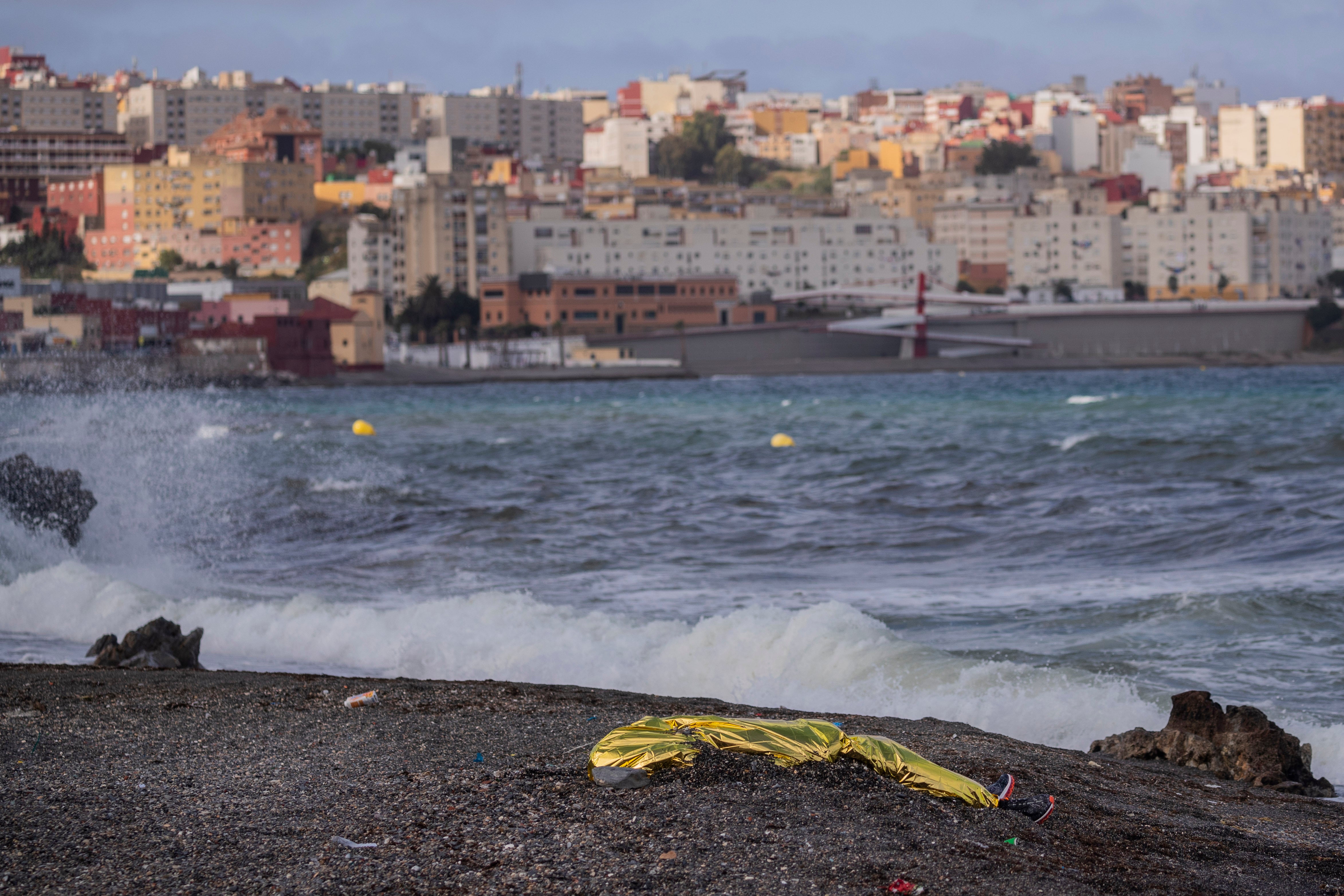UN: Migrant deaths on sea routes to Europe more than double
The U.N. migration agency says the number of migrants and refugees who died while attempting to reach Europe on dangerous sea routes more than doubled so far this year compared to the first six months of 2020

Your support helps us to tell the story
This election is still a dead heat, according to most polls. In a fight with such wafer-thin margins, we need reporters on the ground talking to the people Trump and Harris are courting. Your support allows us to keep sending journalists to the story.
The Independent is trusted by 27 million Americans from across the entire political spectrum every month. Unlike many other quality news outlets, we choose not to lock you out of our reporting and analysis with paywalls. But quality journalism must still be paid for.
Help us keep bring these critical stories to light. Your support makes all the difference.
The number of migrants and refugees who died while attempting to reach Europe on dangerous sea crossings more than doubled so far this year compared to the first six months of 2020, the U.N. migration agency said Wednesday in a new report.
At least 1,146 people perished between January and June, according to the International Organization for Migration. The number of people attempting to cross the Mediterranean to Europe increased by 58%, the IOM's report said.
The Central Mediterranean route between Libya and Italy was the deadliest, claiming 741 lives. Next was the stretch of the Atlantic Ocean between West Africa and Spain’s Canary Islands where at least 250 people died, the agency said. At least 149 people also died on the Western Mediterranean route to Spain, as well as at least six on the Eastern Mediterranean route to Greece.
The IOM says the actual number of deaths on sea routes to Europe may be far higher as many shipwrecks go unreported and others are hard to verify.
Human rights organizations have warned that the absence of government search and rescue vessels, particularly in the Central Mediterranean, would make migrant crossings more dangerous, as European governments increasingly rely on and support North African countries with fewer resources to handle search and rescue operations.
Tunisia increased such operations by 90% in the first six months of 2021, while Libyan authorities intercepted and returned more than 15,000 men, women and children to the war-torn country, three times more people than in the same period last year, the IOM report said.
Meanwhile, Italian authorities increasingly targeted charity rescue ships that have worked over the years to fill the void left by European governments, routinely detaining the vessels operated by nongovernmental organizations for months, sometimes years.
While many factors contributed to this year's higher death toll, including an increase in the number of flimsy boats attempting sea crossings, “the absence of proactive, European, state-led search and rescue operations in international waters combined with restrictions on NGOs” was among the main factors, IOM spokesperson Safa Msehli said.
“These people cannot be abandoned in such a dangerous journey,” Msehli told The Associated Press.
Italy detained nine NGO-operated ships so far this year, according to Matteo Villa, a research fellow for the independent think thank ISPI, who tracks data and statistics on migration.
Mediterranean countries such as Italy, Malta, Spain and Greece have repeatedly asked other European countries for help caring for the people who are rescued and brought to their shores.
Last year, when pandemic restrictions made it hard to move between countries, the number of refugees and migrants arriving in Europe by sea dropped to its lowest level since 2015. That year, 1 million reached Europe, many of them refugees fleeing the war in Syria.
The deadliest shipwreck so far this year took place April 22 off Libya, when 130 people drowned despite sending multiple distress calls.
The EU-trained and equipped Libyan coast guard was criticized after video emerged showing one of its vessels chasing and firing warning shots at a migrant boat on June 30. Libyan authorities acknowledged the coast guard vessel’s actions endangered the lives of migrants and vowed to hold those responsible to account.
In recent years, human rights groups have reported the mistreatment, torture and abuse of migrants and refugees after they are intercepted by the Libyan coast guard and placed in dreadful detention centers.
___
Follow AP’s global migration coverage at https://apnews.com/hub/migration
___
A previous version of this story was corrected to show that the number of people attempting to cross the Mediterranean to Europe increased to 58%, not 56%.
Subscribe to Independent Premium to bookmark this article
Want to bookmark your favourite articles and stories to read or reference later? Start your Independent Premium subscription today.